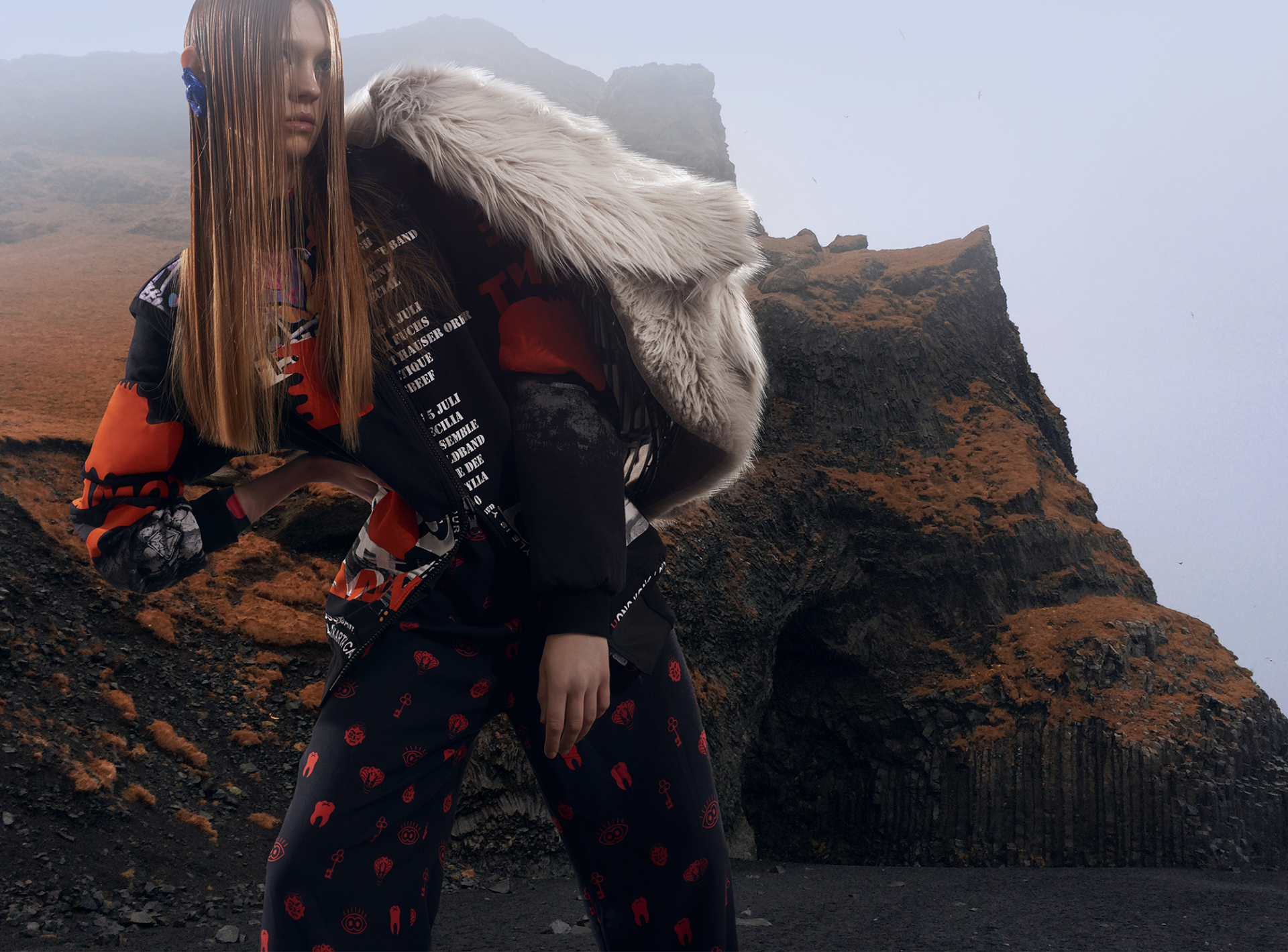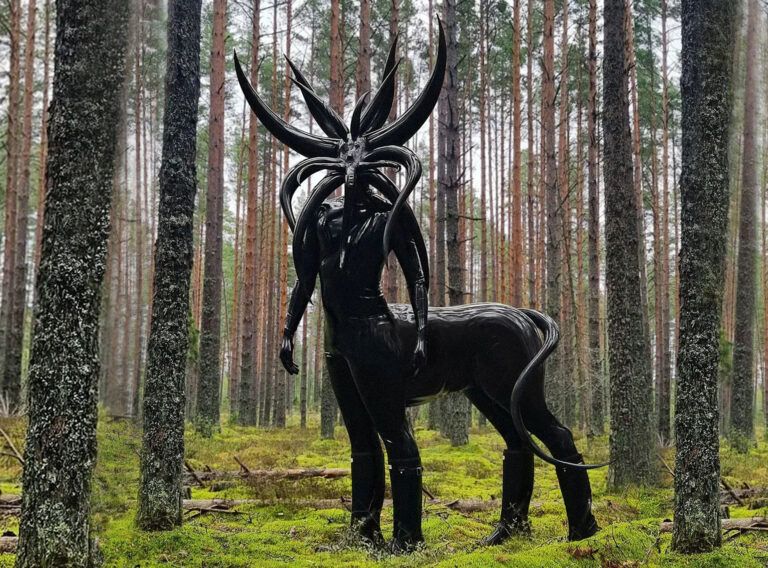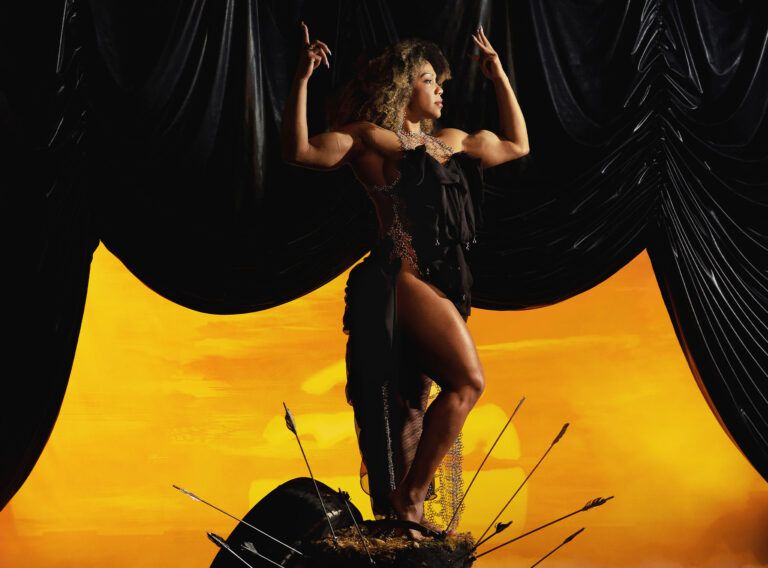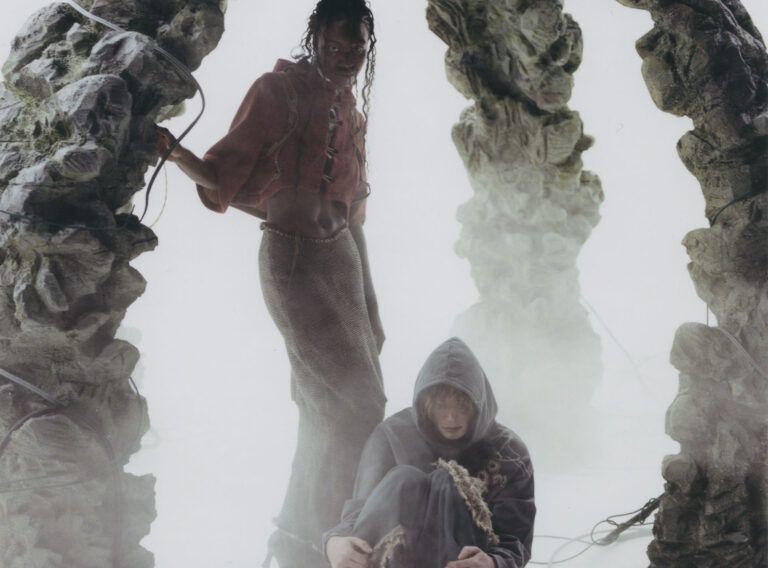A mix of streetwear and high fashion, the Pat Guzik label, a small and independent one based in Krakow, designs with sustainable fashion rules at heart. Their signature pieces are a fusion of different Asian and European cultures and original fabric prints made by Polish illustrator Mateusz Kolek. They create the labyrinth of symbols that leads the customer through the label’s storytelling. Longing for love but also waiting and searching – all these are topics that interest Pat greatly and mirror in her designs. Her work bridges austerity, rawness and dreams. The first question she asks is, ‘what story do I want to tell?’ Then she creates a mood board based on photographic materials and other visual references. This forms the beginnings of the concept and, from there, she moves onto choosing the fabrics and creating the silhouettes. Pat Guzik garments are produced in Poland using textiles by Polish manufacturers and in collaboration with local producers.



WORDS BY THE AUTHOR / After my graduation, I asked myself, “what kind of brand do I want to run?” I knew that fashion was fast and full of “unknowns”. I decided to do fashion the right way. I wanted to be transparent with my production. I also wanted to do something more than just clothes. I am a philosopher by education and philosophy has been important for the development of my fashion work. I love approaching fashion in an exploratory way, I always ask the questions first and my work develops out of finding the answers. I’m growing my brand day by day, learning from my experiences, searching for new sustainable solutions and partners in the supply chain. I truly believe that my brand can be also a platform to educate my clients about the social and environmental impacts of fashion, tolerance, diversity and open-mindedness. The last few years have proved to me that a small independent brand can operate globally by slowly but steadily finding new loyal customers around the world. It also proved to me that my concerns about the environment and related hopes are shared with many people around the world.



Consumers are constantly wanting more and for a cheaper price. As designers, we should stop for a moment and consider why sustainable fashion is important for us today and what it means for each of us in our work. Today’s fashion industry is so fast paced and we’re constantly looking for new things made from new materials. I asked myself, ‘what I can do as a young fashion designer without big financial capital.’ And I realized that the answer is really simple: I can make a difference in the industry. To me, sustainable fashion means living in balance. We need to slow the consumption down and stop creating new, new, new. We need to change our thinking around clothes and more designers need to show consumers that we are able to make beautiful clothes using old clothes and damaged textiles “


We work in cooperation with local producers, small sewing factories and dressmakers, which we want to re-activate professionally. Efficient use of materials and the elimination of textile waste is a theme throughout my collections. For example, the RELOVE line is made of second-hand clothing, stock textiles and production leftovers. We ship our products in packaging made of 100% recycled materials (biodegradable and compostable). Instead of plastic tape, we use one made from natural resources. If any of our products require cardboard for shipping, we encourage customers to reuse it. We print all labels on paper with the FSC Recycled and the European ECOLABEL certificate. We work with a Polish eco printing company. We limit the number of tags and promotional materials. We believe that less is more!

Texture, color and shape are at the core of the collections. Jumpers are knitted with the use of rug-making techniques. We print Maheusz’s designs on existing and salvaged garments. This re-printing technique has enabled me to bring new life to discarded textiles and the products inspired me a lot too. Those old wool sweaters, hats and scarves which I collect to be upcycled and reconstructed are then combined with hand-weaving with damaged textiles and unraveled second-hand garments, which I sourced from fabric wholesalers and secondhand shops in Krakow. In Poland, we’ve got a long-standing tradition in recycling. We are brought up to know how to make something from nothing. Years of war during the communism era taught us that it is possible to recycle everything with our own hands. My grandparents taught me that we need to have a big respect for people’s work, for things so I would never forget about my roots, the power of craft, the experience of people.




Generally, we have no respect for clothes because we’re drowning in oceans of them. We don’t repair – just buy new ones. It’s important to remember that designers are able to make beautiful clothes using waste material that are equally, if not more, original and creative. Using waste can sometimes be challenging but no one said life would be easy! Easy can be boring! We need to recognize that less is more; we need to slow down our consumerism, change the thinking around clothes, return to our roots, not forget our past and start thinking about our future. We truly believe that fashion is not just clothes. Fashion is a platform where we can use our voices to talk about sustainable lifestyle, tolerance, diversity, open-mindedness and love.




BIO/ PAT GUZIK (born 1986) lives and creates in Krakow. She graduated from the faculties of Philosophy and Fashion Design. Her diploma collection was awarded with 6 months scholarship in Escuela de Diseno y Alta Costura in Valencia. She showed her collection in Riga (Habitus Bajtija), Hannover (Fashion Finals), Budapest (Central European Fashion Days) , Hong Kong (Hong Kong Fashion Week, CenterStage Asia’s Fashion Spotlight) ,Vancouver Fashion Week) , Fashion Scout (London Fashion Week) Winner of Eco Chic Design Award 15/16 and special prize collaboration with Janet Ma. ( organised by Redress Asia). 2017 Upcycled capsule collection for Shanghai Tang (Hong Kong) 2017 Winner:Best Formal/Couture Fashion Label, The Eluxe Awards 2017/ Sustainable Luxury Awards /Los Angeles. Pat Guzik’s clothes are designed in tune with sustainable fashion rules and their garments are fur-free.

Credits
Photography:
1-8 / Pawel Wylag
9 / Dawid H. Gronski
10-12 / Culture.pl
13 /Redress Asia
14-18 / Kasia Bielska




